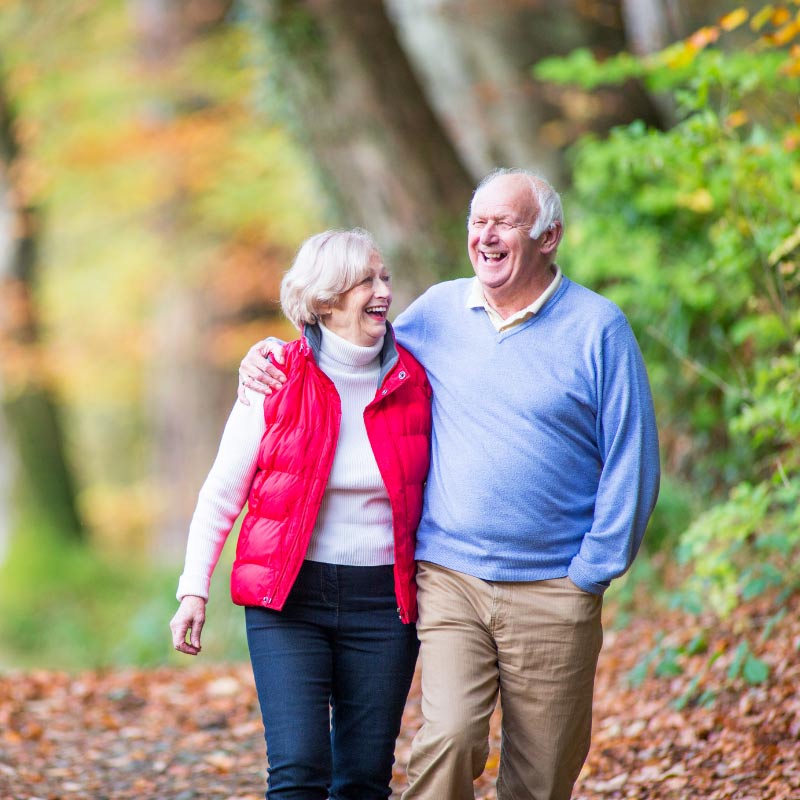Tips for Getting Active as You Get Older
We all know that a balanced diet is important to support healthy ageing. But did you know that exercise is also essential for a happy mind and healthy body, even in older age? Often, we assume that exercise is dangerous, impossible, or even pointless in old age. But in reality, getting active as you’re getting older can keep you looking and feeling younger for longer.
Why is Exercise Important for Older Adults?
Physical exercise is vital for people of all ages, and older adults are no exception. For older adults, exercise can help lower the risk of high blood pressure, diabetes, osteoporosis, and more. As we age, our metabolism slows, making it more challenging to maintain a healthy weight. Exercise can also help keep our weight within a healthy range, lessening the impact on our joints.
Although it’s common to worry that exercise could cause a fall, the opposite is actually true. Regular exercise has also been shown to help reduce the risk of falls by maintaining the muscles used for balance. Plus, exercise also keeps us healthy mentally, by improving mood, reducing stress, and supporting restful sleep. Basically, regular, quality exercise has a long list of benefits for the elderly, so staying active is a no brainer!
Note: always consult your doctor before starting a new exercise regime. Also, for those who have a medical condition, live with disability, or have suffered an injury—your doctor can advise you on the best exercises for your personal situation.
Exercise Types
In general, experts recommend that older adults get at least 30 minutes of exercise per day. And to keep your mind and body in peak condition, your exercise routine should include a mixture of the following:
Cardio Fitness Exercise: Exercise which focuses on your heart and lungs. For instance, walking, bike riding, swimming, or dancing.
Strength Exercise: Activity that helps strengthen your muscles and bones. This could include lifting weights, climbing stairs, or targeted, body-weight manoeuvres.
Flexibility Exercise: Stretching exercises that help with flexibility and movement. For example, yoga, or any exercise which includes gentle bending.
Balance Exercise: Exercise aimed at increasing balance, (usually strength-based).
Aim for around two sessions of strength-based exercise per week. And try to avoid back-to-back strength sessions, to give your body time to recover. Low impact flexibility and balance exercises can be done each day. And cardio exercise should be done as often as possible (for example, a 15-minute walk every morning).
Exercise Ideas
If you’re unsure where to start, consult a doctor or a trusted professional. They may recommend beginning with a light walk around your street or joining an exercise class. Either way, it’s best to start off easy. If you’re not used to walking great distances, don’t plan a 5-kilometre walk for your first time. Give your body time to ease into your new routine before pushing any limits. Also, it’s worth noting that you may be sore after trying a new exercise. A bit of pain or tenderness is normal and will quickly subside. But any intense pain should be assessed by your doctor.
Once you’ve decided which exercise types work best for your body, the world is your oyster. You could try swimming, yoga, tennis, badminton, weights, Pilates and more. Or, if you’re someone who doesn’t enjoy traditional exercise, there are other ways to stay fit and healthy. Think outside the box; go for a walk while birdwatching or do laps of the local park or shopping centre. Catch up with a friend and exercise together. Do some gardening. Or even try out some seated stretches while watching TV.
Also, if you’re not as nimble as you used to be, don’t give up! There are plenty of exercises to suit people with limited mobility, like low-impact swimming, specialist yoga, or seated weight training.
Now, get active, stay hydrated, and most importantly—stay healthy. Be patient with yourself and your body, and enjoy the wonderful benefits of exercise!
Need help getting to and from your yoga class or the local park? Simply Helping offers transport as part of our flexible in home care. Click here to learn more and contact us today.





